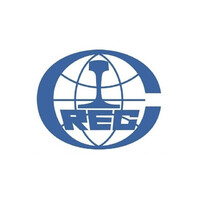
China Railway Group Limited
China Railway Group Limited is a civil engineering company based out of Beijing, China.



China Railway Group Limited is a civil engineering company based out of Beijing, China.

Some 45 years ago, we set out with the ambitious goal of providing affordable housing, working to make Brazilian dreams come true. Over the last few years, we have crafted and shaped our story, becoming a brand-leading platform that offers a variety of housing solutions for individuals and families from all walks of life – after all, each person is an individual – and every individual is as important as the next. Our company has joined together the efforts of some 30,000 staff members aiming to build dreams that transform the world – because we believe that purchasing a home is not the end of the line, but the beginning of life-changing transformation and the origin of many dreams for the future. Our company is present in more than 160 cities and 22 states, seeking to bring quality of life, comfort and innovation to the doorstep of thousands of families. And it is our great pleasure to announce that, today, one in every 150 Brazilians has an MRV that they call home. But we don’t stop there. Each development comes with the essential building blocks of a community such as daycare centers, health clinics, paved streets, green spaces, reforestation and much, much more. Because growth and urban development require the balance of social responsibility and sustainability, in addition to meeting the true needs of each community – an essential part of our DNA and an example of our commitment to the people of our communities. Click here to take a look at our company’s day-to-day routine and what we mean when we say: ‘to be MRV’.
Security & Compliance Standards Overview












No incidents recorded for China Railway Group Limited in 2025.
No incidents recorded for MRV in 2025.
China Railway Group Limited cyber incidents detection timeline including parent company and subsidiaries
MRV cyber incidents detection timeline including parent company and subsidiaries
Last 3 Security & Risk Events by Company
Angular is a development platform for building mobile and desktop web applications using TypeScript/JavaScript and other languages. Prior to versions 19.2.16, 20.3.14, and 21.0.1, there is a XSRF token leakage via protocol-relative URLs in angular HTTP clients. The vulnerability is a Credential Leak by App Logic that leads to the unauthorized disclosure of the Cross-Site Request Forgery (XSRF) token to an attacker-controlled domain. Angular's HttpClient has a built-in XSRF protection mechanism that works by checking if a request URL starts with a protocol (http:// or https://) to determine if it is cross-origin. If the URL starts with protocol-relative URL (//), it is incorrectly treated as a same-origin request, and the XSRF token is automatically added to the X-XSRF-TOKEN header. This issue has been patched in versions 19.2.16, 20.3.14, and 21.0.1. A workaround for this issue involves avoiding using protocol-relative URLs (URLs starting with //) in HttpClient requests. All backend communication URLs should be hardcoded as relative paths (starting with a single /) or fully qualified, trusted absolute URLs.
Forge (also called `node-forge`) is a native implementation of Transport Layer Security in JavaScript. An Uncontrolled Recursion vulnerability in node-forge versions 1.3.1 and below enables remote, unauthenticated attackers to craft deep ASN.1 structures that trigger unbounded recursive parsing. This leads to a Denial-of-Service (DoS) via stack exhaustion when parsing untrusted DER inputs. This issue has been patched in version 1.3.2.
Forge (also called `node-forge`) is a native implementation of Transport Layer Security in JavaScript. An Integer Overflow vulnerability in node-forge versions 1.3.1 and below enables remote, unauthenticated attackers to craft ASN.1 structures containing OIDs with oversized arcs. These arcs may be decoded as smaller, trusted OIDs due to 32-bit bitwise truncation, enabling the bypass of downstream OID-based security decisions. This issue has been patched in version 1.3.2.
Suricata is a network IDS, IPS and NSM engine developed by the OISF (Open Information Security Foundation) and the Suricata community. Prior to versions 7.0.13 and 8.0.2, working with large buffers in Lua scripts can lead to a stack overflow. Users of Lua rules and output scripts may be affected when working with large buffers. This includes a rule passing a large buffer to a Lua script. This issue has been patched in versions 7.0.13 and 8.0.2. A workaround for this issue involves disabling Lua rules and output scripts, or making sure limits, such as stream.depth.reassembly and HTTP response body limits (response-body-limit), are set to less than half the stack size.
Suricata is a network IDS, IPS and NSM engine developed by the OISF (Open Information Security Foundation) and the Suricata community. In versions from 8.0.0 to before 8.0.2, a NULL dereference can occur when the entropy keyword is used in conjunction with base64_data. This issue has been patched in version 8.0.2. A workaround involves disabling rules that use entropy in conjunction with base64_data.